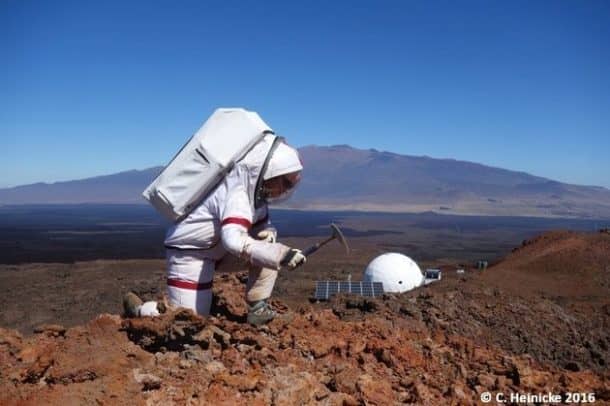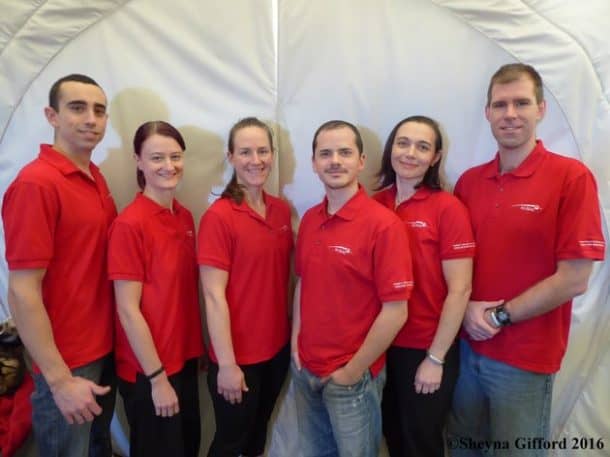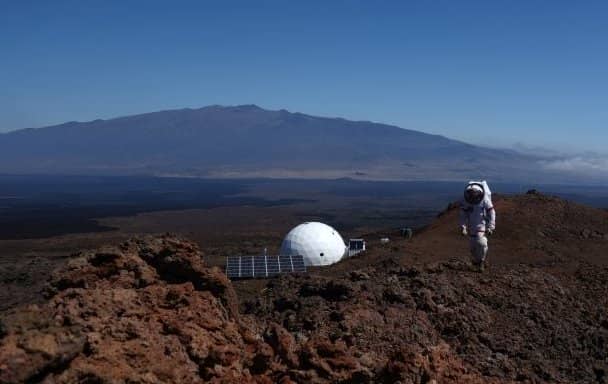Sending humans off to the Mars is not merely technologically daring. In fact, huge psychological challenges are also associated to the mission.
Last Sunday, a team of international scientists returned from the simulated Mars environment built atop the Mauna Loa volcano in Hawaii. The scientists spent 365 days inside the isolated Mars-like habitat, Hawaii Space Exploration and Analog and Simulation, abbreviated as the HI-SEAS.
The chief medical and safety officer for the fourth HI-SEAS mission, Sheyna Gifford reported that the biggest challenge they confronted was the excruciating ‘sense of helplessness.’
“…trying to find a way to help from here is very difficult.”

The crew of six stepped out of their spacesuits after one year to conclude the longest space travel simulation on the US soil. The crew spent one year of their life as they prepared for the human life on Mars. The team communicated via emails and voice recordings, all of which were delayed by 20 minutes to create the communication system observed in deep space. The HI-SEAS group shared their personal hardships, future plans, and above all, their belief that nothing is impossible for the humans.
The HI-SEAS team members were not allowed to step outside until they were dressed in full spacesuits. One year does not seem like a long time when you are living on the Earth, enjoying the hustle and bustle of life around you. Yet, for a person confined more than 8200 feet above sea-level, inside a 1000-square-feet dome, time never seems to move on.

NASA indulges the HI-SEAS crew by assigning them a rigorous routine of research, field work, equipment testing, exercise, and much more. The crew commander, Carmel Johnston said the experience was tough and:
“[at times] you are just trying to keep your head above water.”
She emphasized that the time spent on simulated Mars didn’t feel like a year to her:
“It doesn’t feel like a year, I think that’s the strangest part. It feels like we’ve been here a few months.”
Apart from missing the obvious offerings of the Earth like the fresh produce, the HI-SEAS project also meant to examine another significant aspect of travel and living on Mars that is the emotional challenges including the chances of depression and conflict.

Gillford’s grannie passed away just a month ago; it was one of the toughest things she had to endure while inside the simulated Mars habitat.
“I said goodbye to my grandmother over a delayed video message. That’s not something any of us ever want to do. So simply not being on Earth, I think everyone would agree, is the most challenging part of space.”
Johnston said she was rather disappointed by the ‘out-of-sight-out-of-mind’ treatment from some:
“We changed everything about our lives and limited ourselves to only communicating by email. If anyone didn’t want to hop on that wagon, we just didn’t hear from them this year. It can be pretty disheartening to feel like you are missing out on everything happening at home.”
Tristan Bassingthwaighte was the crew architect for the HI-SEAS. He documented his experiences as:
“A person can be totally cool one minute and severely annoying the next. The little things people do that you’d never notice in real life can make you think about tripping them on the stairs here.”
However, the crew reported that never did they feel like giving up. Whenever bored, they found ways to keep themselves occupied. Gifford, the HI-SEAS crew journalist published quite a few blogs and articles. Bassingthwaighte loves to read and said that
“[books were the] little doors to worlds that aren’t this one.”
While others are excited to see their families and reunite with them, Bassingthwaighte is looking forward to living at a place where he gets a full window:
“I mean holy crap! A whole window that belongs just to me? I don’t even know what to do with that, we’ve all been sharing a window the size of a medium pizza for the last year.”
NASA plans to send astronauts to Mars in 2030. The space agency recorded a wide range of social and cognitive factors during the fourth HI-SEAS simulation to determine the performance of a human team during a prolonged stay at Mars.


